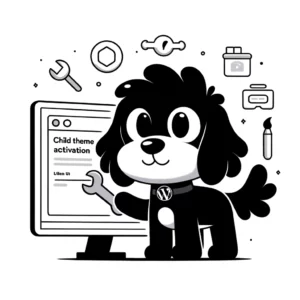Understanding Sandboxes
Sandboxes serve as a secure, isolated environment where software can be executed or tested without risk to the production environment. They function much like a virtualized space or virtual machine, where developers and security professionals can analyze untrusted code with minimal security risks.
Sandboxing is critical for software development and quality assurance. Developers use sandbox environments to test new code, ensuring that changes do not adversely affect existing functionality. This separate testing space mirrors the production setting but remains entirely distinct, preserving the integrity of the live environment.
From a security standpoint, sandboxes defend against zero-day threats and other malware. By executing suspicious programs within the sandbox, security professionals can observe the behavior of potentially malicious code without endangering the system. This controlled environment acts as a containment area, akin to a digital quarantining mechanism, which is especially useful when dealing with unknown or newly discovered vulnerabilities.
Moreover, sandboxes are utilized for security risk assessment. They provide a safe environment for executing code that hasn’t been fully vetted. This approach is part of a proactive security strategy where even undetected, or zero-day, vulnerabilities can be studied without compromising the main system.
In sum, the concept of a sandbox in IT refers to a sandbox program, sometimes colloquially as a sandpit, used for safely running and analyzing code. Its purpose spans from providing a space for new development to protecting existing systems by containing unverified software in a virtualized environment separate from live servers and data.
Sandbox Implementation and Use-Cases
Sandbox environments offer secure spaces for software developers and cybersecurity professionals to test code and defend against security threats. These isolated environments are crucial for quality assurance and project integration, ensuring that new programs or updates do not negatively impact the primary system.
Development and Testing
In development, sandboxes serve as critical tools for testing and quality assurance. Developers use sandboxing to execute new code in an isolated testing environment that mimics production systems. This allows for the safe identification and correction of bugs. For instance, virtual machines can simulate various operating systems, on which developers can test Microsoft Office addons or other software without risk to the actual OS.
Cybersecurity Applications
From a cybersecurity perspective, sandboxes are utilized for analyzing suspicious code and defending against zero-day attacks. They act as secure environments for security research, allowing cybersecurity teams to safely run and analyze potential malware contained in PDFs, email filters, or web services. Antivirus software and network security systems use sandboxing to evaluate behaviors that may otherwise be missed.
Sandbox Tools and Technologies
Sandboxing programs like Sandboxie, VMware, and other virtualization technologies offer platforms for both inspection and development. API sandboxing allows for a safe environment to test third-party integrations, while machine learning in sandboxing can improve security measures against evolving threats. Leveraging these tools aligns with regulations that demand rigorous testing and secure data handling.
Challenges and Best Practices
Understanding the challenges and implementing best practices is critical for maintaining a secure and efficient testing environment as the use of sandboxes becomes more prevalent. Both security and operational considerations should guide sandbox usage.
Security Considerations
In cybersecurity, sandboxes are crucial in analyzing and containing malware and zero-day threats. Vulnerabilities in sandboxing, however, can arise if restrictions aren’t correctly configured. For instance, antivirus software may be less effective inside sandboxes without up-to-date patches and dependencies. Cybersecurity experts must ensure airtight sandboxes to prevent leaks that could expose the host system to risk.
Tools like Microsoft Hyper-V and Oracle VirtualBox must be complemented with solid security measures, such as regular updates and predictive analysis, to mitigate these risks. Establishing a secure environment requires constant team collaboration to adapt to the evolving market and potential threats.
Operational Considerations
From an operational standpoint, system resources can be a significant bottleneck. Sandboxes, particularly when running complex simulations or handling large amounts of data, can consume substantial resources. It’s essential to allocate enough CPU, memory, and storage to handle the demands while maintaining overall system performance.
For cloud-based sandboxes, ensuring compliance with legal and privacy standards is necessary. Also, considering the sandbox’s impact on the network and managing its dependencies are pivotal for maintaining operational integrity. Best practices include using sandbox solutions like Shade, BitBox, or cloud services that offer sandboxing features while minimizing resource usage. Always keep the sandbox environment updated and isolate it from production environments to prevent disruption in day-to-day operations.
Proper sandbox management often requires using specialized tools for software protection, such as environments that focus on running vulnerable plugins like Microsoft Silverlight and Adobe Flash or utilizing Adobe Reader Protected Mode to shield from PDF-based threats. By adhering to these best practices, organizations can maintain a secure and isolated testing environment capable of handling a variety of scenarios with minimal risk to the primary system.













